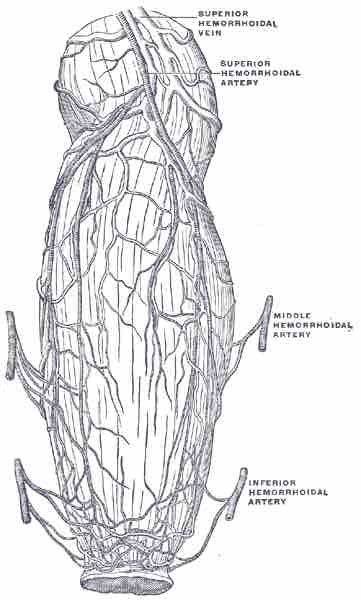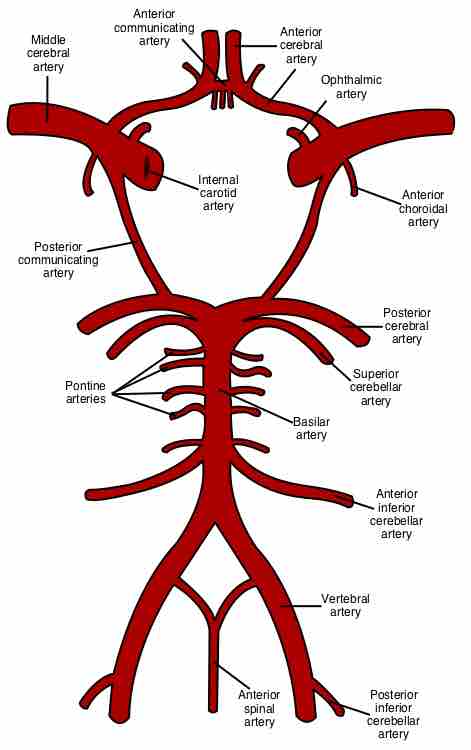An anastomosis refers to any join between two vessels. Circulatory anastomoses are named based on the vessels they join: two arteries (arterio-arterial anastomosis), two veins (veno-venous anastomosis), or between an artery and a vein (arterio-venous anastomosis). Anastomoses between arteries and anastomoses between veins result in a multitude of arteries and veins serving the same volume of tissue. Such anastomoses occur normally in the body in the circulatory system, serving as backup routes for blood to flow if one link is blocked or otherwise compromised, but may also occur pathologically.

Anastomoses
The blood vessels of the rectum and anus, showing the distribution and anastomosis on the posterior surface near the termination of the gut.
Examples of Anastomoses
Arterio-arterial anastomoses include actual joins (e.g. palmar arch, plantar arch) and potential ones, which may only function if the normal vessel is damaged or blocked (e.g. coronary arteries and cortical branch of cerebral arteries). Important examples include:
- The circle of Willis in the brain. The arrangement of the brain's arteries into the circle of Willis creates redundancies for the cerebral circulation. If one part of the circle becomes blocked or narrowed or one of the arteries supplying the circle is blocked or narrowed, blood flow from the other blood vessels can often preserve the cerebral perfusion well enough to maintain function.
- Joint anastomoses. Almost all joints receive anastomotic blood supply from more than one source. Examples include the knee and geniculate arteries, shoulder and circumflex humeral, and hip and circumflex iliac.
- Coronary artery anastomoses. The coronary arteries are functionally end arteries, so these meetings are referred to as anatomical anastamoses, which lack function. As blockage of one coronary artery generally results in death of the heart tissue due to lack of sufficient blood supply from the other branch, when two arteries or their branches join, the area of the myocardium receives dual blood supply. If one coronary artery is obstructed by an atheroma, a degradation of the arterial walls, the second artery is still able to supply oxygenated blood to the myocardium. However, this can only occur if the atheroma progresses slowly, giving the anastomosis time to form.

The Circle of Willis
Schematic representation of the circle of Willis--arteries of the brain and brain stem. Blood flows up to the brain through the vertebral arteries and through the internal carotid arteries.
Pathological anastomoses result from trauma or disease and are usually referred to as fistulae. They can be very severe if they result in the bypassing of key tissues by the circulatory system.